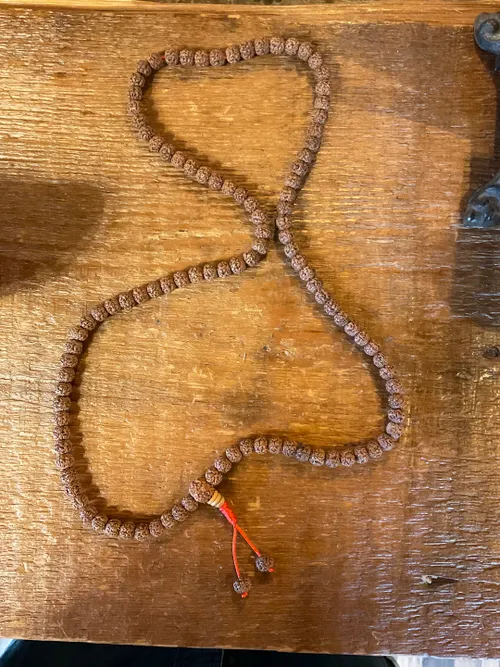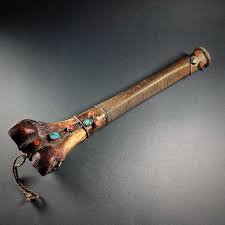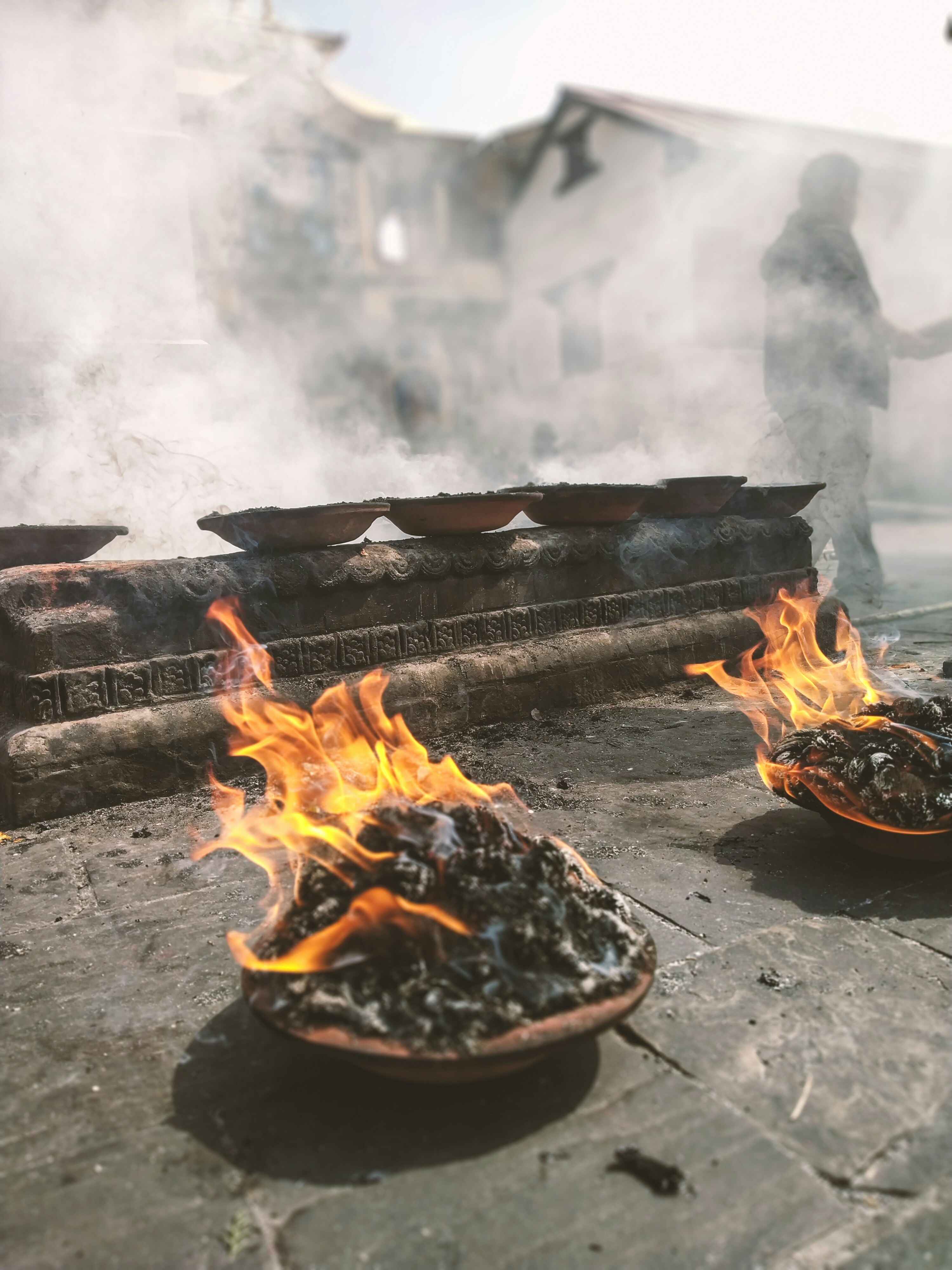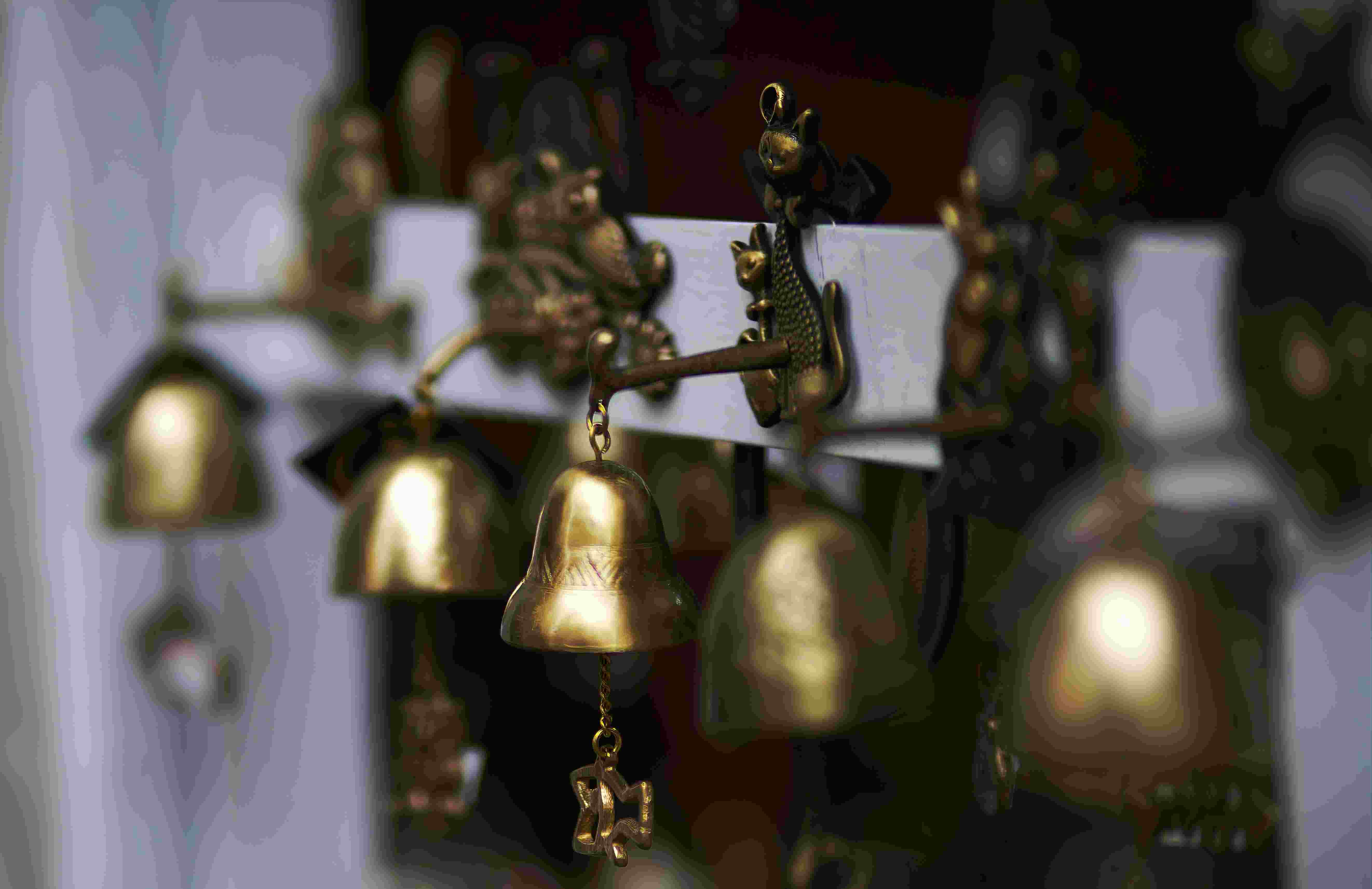Share this Article
Mala beads, a traditional spiritual tool, have played a significant role in the lives of millions of people across the world, particularly in South Asia. Rooted in the deep spiritual practices of Hinduism, Buddhism, and Jainism, these beads are not only valuable for their spiritual significance but also hold cultural and economic importance, particularly in Nepal. With a rich history tied to meditation, prayer, and rituals, mala beads reflect a connection to nature, the divine, and the pursuit of inner peace. This article delves into the history of mala beads, their cultural significance in Nepal, the trees associated with them, their production process, and their economic impact.
The History of Mala Beads: Origins, Spiritual Significance, and Cultural Evolution
Mala beads are not just ornamental objects but are imbued with deep spiritual significance and have a rich historical background rooted in ancient spiritual practices. The word “mala” comes from the Sanskrit term meaning “garland” or “necklace,” which is an apt description given their design. Traditionally, malas are used for meditation, mantra chanting, and as a tool for focusing one's mind during spiritual practices. The practice of using mala beads has been around for thousands of years, originating in ancient India and gradually becoming an integral part of religious practices in both Hinduism and Buddhism. Today, these beads are widespread across cultures, with Nepal playing a significant role in their production and spiritual importance.
Origins and Early Use of Mala Beads
Mala beads trace their origins to ancient India, where they were used primarily in Hinduism for meditation, mantra recitation, and prayer. The earliest references to malas can be found in the Vedas, ancient Hindu scriptures, which date back over 3,000 years. These texts mention malas as a tool for japa, the repetition of mantras, which is one of the central practices in Hinduism. Japa is believed to purify the mind and soul, remove negative energies, and foster spiritual progress. As such, malas served as a tangible aid to keep track of the number of recitations, ensuring the practitioner could focus fully on the mantra or prayer without losing count.
The design of the mala is a direct response to this need for repetition. A mala typically consists of 108 beads, each bead representing one repetition of the mantra. This number 108 holds great symbolic and spiritual significance, which is rooted in both numerology and sacred geometry.
Spiritual and Cultural Significance of the Number 108
The number 108 holds profound importance in several ancient traditions, especially in Hinduism and Buddhism. It is considered a sacred number and represents the cosmos in its entirety, including the universe's material and spiritual aspects.
1.In Hinduism: The number 108 is tied to various symbolic aspects of Hindu belief:
108 Hindu deities: There are said to be 108 Hindu deities, and repeating mantras using mala beads is a way to connect to these divine entities.
108 sacred texts: It is believed that there are 108 sacred texts, including the Upanishads and Puranas, which are central to Hindu philosophy.
108 earthly desires: Hindu tradition holds that there are 108 earthly desires or distractions that hinder the path to spiritual liberation. Repeating mantras 108 times is seen as a way to purify oneself and remove these distractions.
2. In Buddhism: The number 108 is also significant in Buddhist practice, particularly within the context of meditation and mantra chanting.
108 earthly temptations: In Buddhism, the number symbolizes the 108 earthly temptations or distractions that prevent spiritual progress and enlightenment. These temptations include physical desires, attachments, and mental distractions.
108 beads in malas: The 108 beads are meant to represent the process of overcoming these distractions through mindful practice and meditation. As a practitioner repeats their mantras, they are symbolically cleansing themselves of these temptations, striving for enlightenment.
3. In Jainism: Mala beads also hold importance in the practice of Jainism, though this is a smaller religious group in Nepal. Jains use 108-bead malas to count their repetitions of mantras and to maintain focus during meditation and prayer.
Thus, the number 108 in mala beads acts as a bridge between the material and spiritual worlds, helping practitioners to focus their minds and purify their thoughts.
Mala Beads in Hinduism and Buddhism: Rituals and Practices
In Hinduism, malas are primarily used to assist in the practice of japa. A practitioner will recite a mantra, often the Om Namah Shivaya or the names of specific deities like Lord Vishnu or Lord Ganesha, while counting each repetition on the mala beads. The beads help in maintaining concentration, and the process is said to invoke divine blessings, protect the mind from distractions, and cultivate devotion and focus.
The Rudraksha mala, made from the seeds of the Elaeocarpus ganitrus tree, is particularly important in Hinduism. The Rudraksha beads are believed to be sacred and associated with Lord Shiva. According to Hindu mythology, the Rudraksha tree is said to have grown from the tears of Lord Shiva, and wearing these beads is thought to bestow spiritual power, clarity, and peace. These beads are highly regarded for their ability to protect and purify the wearer, providing a connection to the divine.
In Buddhism, the mala beads take on a similar role, although the mantras and practices differ. Buddhists commonly use malas to keep track of their recitations of Om Mani Padme Hum, a sacred mantra in Tibetan Buddhism that invokes compassion and wisdom. Each bead on the mala represents a repetition of the mantra, which helps the practitioner focus and deepen their meditation practice.
Buddhist malas are often made from Bodhi seeds, which come from the tree under which Siddhartha Gautama (the Buddha) attained enlightenment. This association gives the Bodhi seed malas a unique significance in Buddhist meditation practices. The mala serves as a reminder of the path to enlightenment, the need for mindfulness, and the overcoming of mental distractions.
The Trees and Materials Used in Mala Beads
The materials used to create mala beads are deeply tied to the culture and spirituality of Nepal. The choice of materials is not arbitrary; each type of bead is thought to possess unique spiritual properties that aid the practitioner in their spiritual journey.
1. Rudraksha: The Rudraksha bead is one of the most sacred and revered materials used in mala bead production. The seeds are collected from the Elaeocarpus ganitrus tree, which grows primarily in the hilly and mountainous regions of Nepal, India, and parts of Southeast Asia. The seed’s surface has distinct, ridged indentations or "mukhis," which are believed to hold specific powers. The number of "mukhis" (facets) on each bead can range from one to twenty-one, with the five-mukhi variety being the most common and popular.
2. Bodhi Seeds: The Bodhi tree, under which Lord Buddha attained enlightenment, is a central figure in Buddhist teachings. The seeds of this tree are used to create malas for Buddhist meditation. Bodhi seed malas are believed to possess the energy of enlightenment and to aid in mental clarity and focus.
3. Sandalwood: Another common material used for making mala beads in Nepal is sandalwood. Sandalwood has a soothing aroma and is considered to purify the mind and body. It is believed to calm the senses and bring peace, making it a favorite choice for malas used in meditation.
4. Tulsi Seeds: Tulsi (or holy basil) is a sacred plant in Hinduism. The leaves of this plant are used in worship, and its seeds are used to make malas. Tulsi beads are highly revered and are said to bring purity, health, and protection from negative energies.
5. Gemstones: In modern mala production, semi-precious gemstones like amethyst, turquoise, lapis lazuli, and rose quartz are increasingly used for their supposed healing properties. Each stone is thought to have unique metaphysical qualities that can assist in different spiritual practices.
The Production Process of Mala Beads
The production of mala beads in Nepal is both an artisanal and a spiritual process. It involves several meticulous steps, from the harvesting of materials to the final stringing of beads.
1. Harvesting: Depending on the type of mala being produced, the first step is harvesting the raw materials. For Rudraksha beads, the seeds are collected from the Elaeocarpus ganitrus tree after they have ripened. For Bodhi seeds, the seeds are harvested directly from the Bodhi tree. Other materials like sandalwood are either cut from the tree or carved into beads by skilled artisans.
2. Cleaning and Shaping: Once the materials are harvested, they are cleaned thoroughly to remove any impurities. For seeds like Rudraksha or Bodhi, the beads may need to be drilled and shaped carefully to ensure a uniform size. This is done by hand, as the artisans strive to preserve the sacred qualities of the beads. The beads may be polished lightly to enhance their appearance, particularly when using materials like sandalwood or gemstones.
3. Stringing: After the beads are shaped and cleaned, they are strung together. The standard mala contains 108 beads, plus a larger guru bead that marks the beginning and end of the mala. The beads are often strung on strong silk or cotton thread. The thread is carefully tied and secured to ensure the mala can withstand the repeated handling during meditation and prayer.
4. Final Touches: After the mala is strung, it may be blessed by a spiritual leader, particularly for malas made from sacred materials like Rudraksha or Bodhi seeds. Some malas are also adorned with small decorative elements, like tassels, to enhance their aesthetic appeal.
The Role of Mala Beads in Meditation
The most common use of mala beads in both Hinduism and Buddhism is as a tool for meditation. The repetitive process of mantra recitation, coupled with the tactile act of moving each bead, helps the practitioner enter a meditative state. In a quiet and focused environment, each repetition of the mantra brings the practitioner closer to a state of inner calm and spiritual awareness.
The guru bead, the largest bead in the mala, marks the beginning and end of the mala. It symbolizes the teacher or guru who guides the practitioner on their spiritual journey. The guru bead is often not counted when using a mala, and it serves as a reminder of the spiritual lineage and wisdom passed down through generations.
The act of using mala beads also connects the practitioner to centuries of spiritual tradition. It is a way of tapping into the wisdom of ancient masters and the timeless practices that have been passed down through generations of spiritual seekers.
Economic Aspects of Mala Beads in Nepal
The production of mala beads is an important industry in Nepal, especially in the regions surrounding the Kathmandu Valley, where many of the country's spiritual traditions are centered. The crafting of malas provides a source of livelihood for thousands of artisans, from those who harvest the raw materials to the skilled craftsmen who shape and string the beads.
Nepal's export of Rudraksha beads is particularly important. These beads are not only used in Nepal but are also in high demand worldwide, particularly in countries with large Hindu and Buddhist populations like India, Sri Lanka, and countries in Southeast Asia. The demand for Rudraksha malas has grown in recent years due to the increasing global interest in spiritual and wellness practices like meditation and yoga.
Beyond spiritual significance, mala bead production contributes to Nepal’s tourism industry. Many visitors to Nepal purchase malas as souvenirs, often as mementos of their spiritual journeys or meditation retreats in the country.
In addition, the increasing interest in gemstone malas for their healing properties has further bolstered the market for malas in global markets. This growing demand has encouraged both traditional artisans and new producers to embrace the crafting of malas as a viable and sustainable business.
The Global Spread of Mala Beads
Though mala beads originated in India and are closely tied to the religious traditions of Hinduism and Buddhism, their use has spread far beyond South Asia. As spiritual practices like yoga, meditation, and mindfulness have gained popularity worldwide, so too has the use of mala beads.
In modern times, mala beads are not only used for religious purposes but also as fashionable accessories, particularly in the wellness and spiritual communities. The beads are often worn as necklaces or bracelets, believed to provide wearers with a sense of calm, focus, and energy. Many people use malas for stress relief, manifestation practices, and positive affirmations. They are often crafted from various materials such as gemstones, wood, and seeds to align with specific intentions or energies.
In Nepal, which is both a spiritual and cultural center for these traditions, malas are made by skilled artisans who often come from Newar and Tibetan communities in the Kathmandu Valley. The making of malas is not only a spiritual practice for these artisans but also an important source of livelihood. In recent years, malas have become sought-after items for tourists visiting Nepal, who often purchase them as symbols of their spiritual journeys.
Mala Beads in the Modern Context
While malas were originally created as tools for spiritual practice, they have now found a place in contemporary culture, especially within the realms of wellness and self-care. As meditation and yoga continue to gain popularity across the world, more people use malas to aid in their mindfulness practices. Whether it’s to stay focused during meditation, to assist in mantra chanting, or simply to wear as a symbol of peace and serenity, mala beads have become a universal object of spiritual significance.
Additionally, gemstone malas, made from various semi-precious stones like amethyst, turquoise, rose quartz, and lapis lazuli, are believed to possess unique metaphysical properties. For example, rose quartz is thought to promote love and emotional healing, while amethyst is associated with calmness and spiritual protection. These modern malas have found their place in the wellness market, and people often wear them as part of their daily lives to bring balance, healing, and positive energy.
Conclusion
Mala beads are much more than decorative objects; they are powerful spiritual tools with deep historical, cultural, and spiritual significance. From their ancient origins in Hinduism and Buddhism to their widespread use in contemporary wellness practices, mala beads have maintained their relevance across millennia. The number 108, the materials used in their construction, and the act of chanting mantras while using the mala beads all carry rich symbolic meaning and are believed to aid in spiritual growth and transformation.
In Nepal, mala beads are not only an essential part of religious life but also a source of economic activity for many artisans. They represent a connection to ancient traditions, a path toward spiritual enlightenment, and a symbol of inner peace. Whether used in meditation, prayer, or worn as a personal talisman, mala beads remain a profound and enduring aspect of human spirituality, inviting individuals around the world to deepen their mindfulness, devotion, and connection to the divine.
Categories:
Education
Tags:
MalaBeadsNepal
,
MalaHistory
,
CulturalHeritageNepal
,
MalaBeadCraftsmanship








